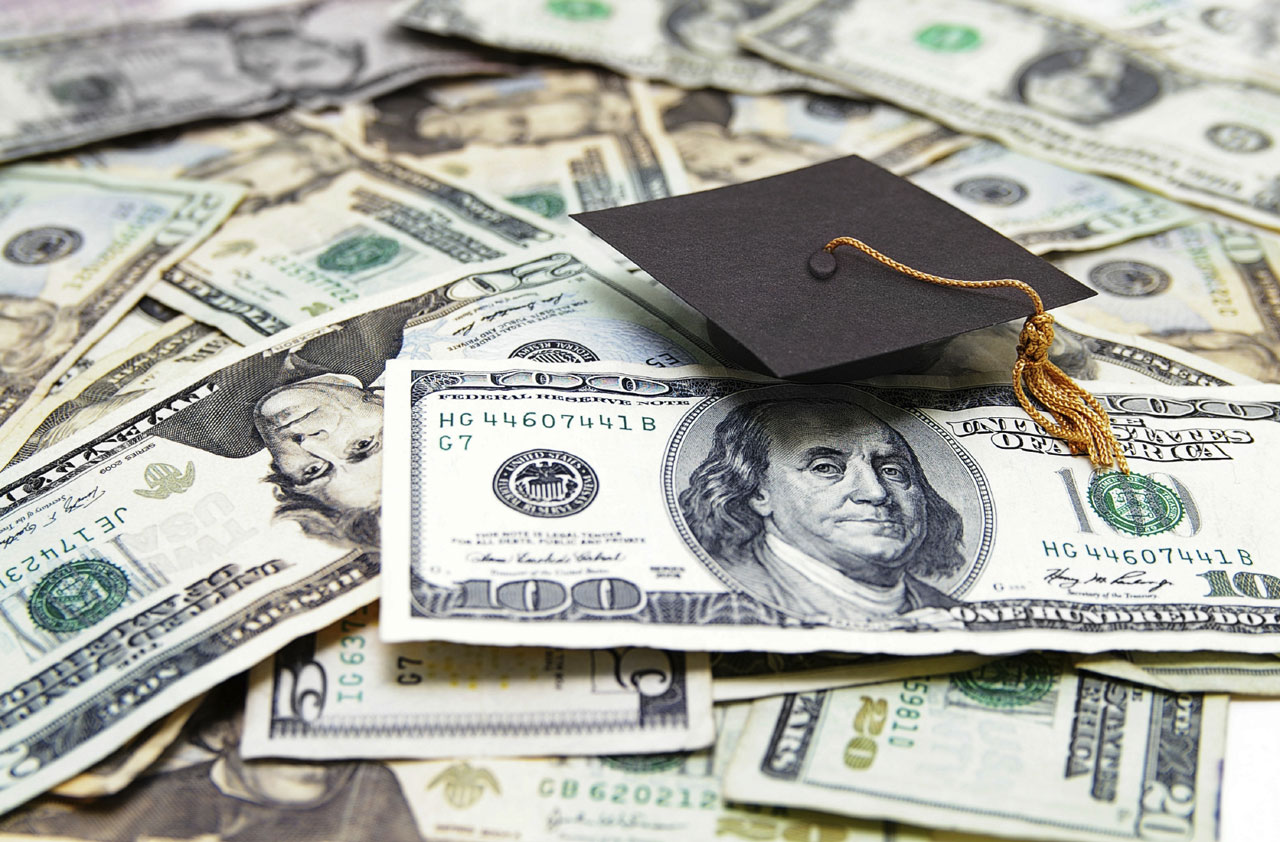Master the Financial Aid Process
Don't spend a dime for financial aid advice. Simply learn the system and the sources, and apply early.

Applying for financial aid can be intimidating and confusing. That's why so many scams offer to do the work for you -- for an up-front fee, of course.
There are legitimate services out there, too, but you could get the same information yourself free. For example, FAFSA.com (not to be confused with the Education Department's Web site) offers to review your FAFSA form for accuracy for $79.99 and walk you through the process over the phone for $99.99. FAFSA stands for Free Application for Federal Student Aid, and it is THE form when it comes to applying for federal financial aid (see below). It can be tedious to fill out, but note the key word: free. Remember that when considering any offers that require you to pay to prepare the FAFSA for you.
Also know that using one of these fee-based services won't necessarily increase your chance of getting funding. To make sure you get the most financial aid possible, learn about the various sources of aid and the application process. And don't delay.

Sign up for Kiplinger’s Free E-Newsletters
Profit and prosper with the best of expert advice on investing, taxes, retirement, personal finance and more - straight to your e-mail.
Profit and prosper with the best of expert advice - straight to your e-mail.
"By completing the application early and in advance of state and school deadlines, students and families have a better chance of securing cheap or even free money for college," says Martha Holler, spokesperson for Sallie Mae, which provides education loans. The sooner you can apply the better, because aid is not an infinite bucket.
Sources of financial aid
Your final aid package could come from a variety of federal or state agencies, private lending institutions or, in the case of scholarships, your employer, club or church. The federal government provides the majority of financial aid -- more than $100 billion a year. The remainder of the aid comes from state agencies, private loans and scholarships.
Department of Education. Federal aid includes loans, grants and campus-based programs and is based, for the most part, on financial need rather than scholastic achievement.
There are four types of loans: Direct subsidized and unsubsidized loans, PLUS loans for parents and Perkins loans for high financial need students. The Federal Pell Grant, which doesn't have to be repaid, usually is awarded only to undergraduate students based on financial need, cost of attendance and other factors.
Campus-based programs, such as work-study, let you earn money to pay for school. To receive any of these forms of aid, students must first fill out the Free Application for Federal Student Aid, or FAFSA, which is discussed below.
Federal agencies. U.S. government agencies such as the Department of Health and Human Services, the Department of Veterans Affairs and many others provide a variety of scholarships, loans and education benefits.
State agencies. Aid programs vary from state to state. For information, check with your state's education department.
Private loans. Before 2008, there was abundance of private education loans that could be used to fill the gaps left by federal programs. Then credit seized up and dozens of lenders left the market. Now, the lenders who do offer the loans have made them harder to get and more expensive.
To get a private loan, your student will not only need good credit, but also a creditworthy cosigner-typically a parent. Rates on these credit-based loans are based on the prime rate, plus a margin, which depends on the applicant's and cosigner's creditworthiness. Ask the financial-aid office at your student's school whether it provides a list of preferred lenders. Compare lenders and loan terms at Edvisors.com and Simpletuition.com.
Scholarships. Finding and applying for scholarships is a time-consuming project that's often not as rewarding as you might hope. Most scholarships tend to be narrowly focused, extremely competitive and financially meager ($500 or less). And some colleges subtract the value of outside scholarships from need-based aid. If you do decide to seek scholarships, check with your school guidance counselor, college financial aid offices, scholarship directories at your library as well as your employer, community organizations, advocacy groups or associations related to your field of interest. Sallie Mae’s free scholarship database contains more than 3 million scholarships worth more than $18 billion in funds. Or search other free sites such as Peterson's and the College Board's Scholarship Search.
The process
Go for the free money first. Grants that do not have to be repaid are available from the federal government, state governments and higher education institutions.
Try your luck with the Education Department before moving on to other federal or state agencies or scholarship funds with smaller pots of money.
The first step is to fill out the FAFSA online or on paper -- you can generally pick up copies at your library, high school or college you plan to attend.
For the 2015-2016 school year, students have until June 30, 2016, to submit the FAFSA. If you want to qualify for state aid, though, you'll have to fill out the FAFSA much sooner (as early as March in some states -- see the deadlines). The application asks for your family's financial information, so you'll need documents such as tax returns on hand.
You also might be required to fill out the CSS/Financial Aid PROFILE. About 400 colleges, universities, graduate and professional schools, and scholarship programs use the PROFILE to determine eligibility for nonfederal student aid funds. If you have a short list of schools, call the financial aid offices to see if they require this form.
Three days to three weeks after submitting the FAFSA, you'll receive a Student Aid Report. It summarizes the information you reported on the FAFSA and tells you your Estimated Family Contribution -- how much you'll be expected to pay for your education.
Financial aid administrators at the colleges where you've applied will use your EFC to determine how much aid you'll get. You'll receive a financial aid award letter that tells you the amount of aid you'll receive for the school year and in what form: loan, grant or campus-based program. The letter usually will tell you what steps you need to take next.
Get Kiplinger Today newsletter — free
Profit and prosper with the best of Kiplinger's advice on investing, taxes, retirement, personal finance and much more. Delivered daily. Enter your email in the box and click Sign Me Up.
-
 3 Ways to Stream The Masters and Save Money
3 Ways to Stream The Masters and Save MoneyIf you plan to stream The Masters and are looking for ways to save, we'll show you several options.
By Sean Jackson Published
-
 Stock Market Today: Tariff Talks Drive Another Up-and-Down Day
Stock Market Today: Tariff Talks Drive Another Up-and-Down DayTrade war negotiations are happening, but the "fear gauge" is gyrating, and investors, traders and speculators are still searching for signs of a bottom.
By David Dittman Published
-
 What To Know if You’re in the Market for a New Car This Year
What To Know if You’re in the Market for a New Car This YearThe Kiplinger Letter Buying a new car will get a little easier, but don’t expect many deals.
By David Payne Published
-
 How Intrafamily Loans Can Bridge the Education Funding Gap
How Intrafamily Loans Can Bridge the Education Funding GapTo avoid triggering federal gift taxes, a family member can lend a student money for education at IRS-set interest rates. Here's what to keep in mind.
By Denise McClain, JD, CPA Published
-
 How an Irrevocable Trust Could Pay for Education
How an Irrevocable Trust Could Pay for EducationAn education trust can be set up for one person or multiple people, and the trust maker decides how the money should be used and at what age.
By Denise McClain, JD, CPA Published
-
 Will Lower Mortgage Rates Bring Relief to the Housing Market?
Will Lower Mortgage Rates Bring Relief to the Housing Market?The Kiplinger Letter As mortgage rates slowly come down here's what to expect in the housing market over the next year or so.
By Rodrigo Sermeño Published
-
 UTMA: A Flexible Alternative for Education Expenses and More
UTMA: A Flexible Alternative for Education Expenses and MoreThis custodial account can be used to pay for anything once the beneficiary is considered an adult in their state. There are some considerations, though.
By Denise McClain, JD, CPA Published
-
 Coverdell Education Savings Accounts: A Deep Dive
Coverdell Education Savings Accounts: A Deep DiveWhile there are some limitations on income and contributions, as well as other restrictions, a Coverdell can be a bit more flexible than a 529 plan.
By Denise McClain, JD, CPA Published
-
 529 Plans: A Powerful Way to Tackle Rising Education Costs
529 Plans: A Powerful Way to Tackle Rising Education CostsContributions to 529 plans grow tax-free and are not taxed when they are used to pay for qualified educational expenses for the beneficiary.
By Denise McClain, JD, CPA Published
-
 Car Prices Are Finally Coming Down
Car Prices Are Finally Coming DownThe Kiplinger Letter For the first time in years, it may be possible to snag a good deal on a new car.
By David Payne Published